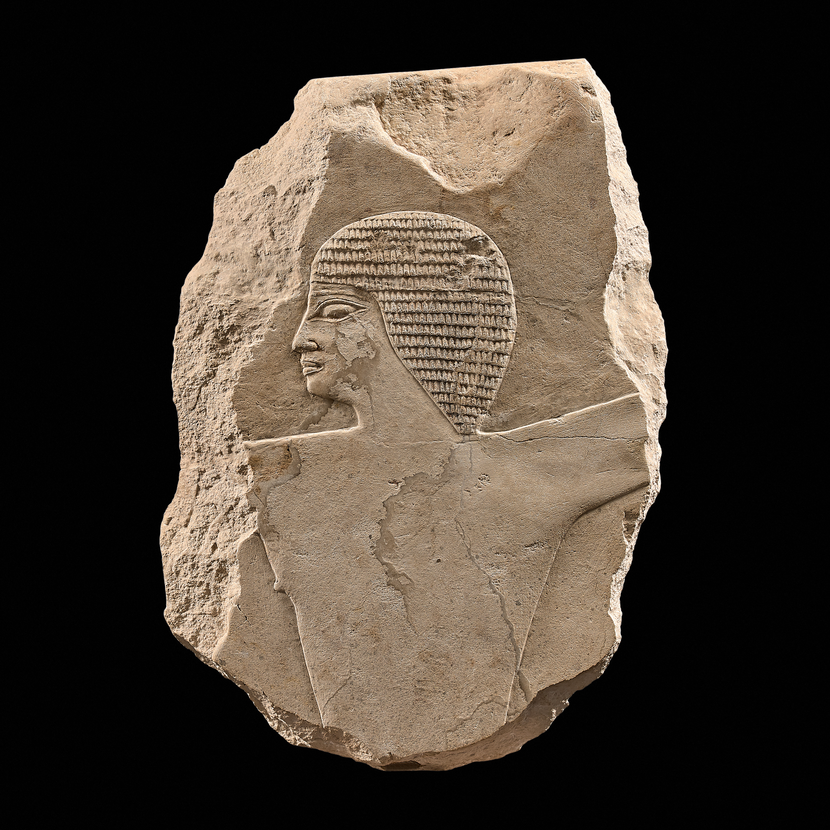Ptah-Sokar-Osiris
Slender mummiform body with hieroglyphic inscription on the front of the legs that gives the name of the deceased, his filiation, and cites a known hymn to the patron of resurrection. The back-pillar was hollowed to hold a corn-mummy consisting of grains, mud and linen wrappings, still inserted in the cavity.
Egypt
Late Dynastic/Ptolemaic Period , 664-32 BC
Gesso painted wood with original inscription and an incorporated corn-mummy
Height 82.5 cm ( 32 1⁄2 in )
Former private collection Willard Golovin New York, USA, acquired prior to 1970; private collection Prof. D.K.
Düsseldorf, Germany, by decent from the above
G. Botti: Le Casse di Mummie e i Sarcophagi da el Hibeh, Firenze 1958
M.J. Raven: Papyrus-sheaths and Ptah-Sokar-Osiris Statues, OMRO 59-60 (1978/79)
H. Ranke: Die Ägyptischen Personennamen, Glückstadt 1935, Band III & V
Slender mummiform body with hieroglyphic inscription on the front of the legs that gives the name of the deceased, his filiation, and cites a known hymn to the patron of resurrection. The hands and arms are completely wrapped in a shroud. A wide collar of beads ending on both sides with falcon heads wearing a sun disc, wraps around the shoulders. The gilded and painted face is framed by a smooth tripartite wig bearing a wide double feather crown with a sun disc and ram’s horns. The rectangular original base is simply decorated with an identical geometric motif on each side. The back-pillar was hollowed to hold a corn-mummy consisting of grains, mud and linen wrappings, yet another association with resurrection. Remnants of this corn-mummy are still inserted in the cavity.
The name of the deceased is no longer legible, the mother’s name is thn.t ‘The scintillating’, one of the attributes of the goddess Hathor, a female name used in the Late Dynastic Period. Part of the hymn is illegible but can be completed by existing parallels.
The present manifestation of the god includes three beings that are very strongly tied to the necropolis of Memphis, the first capital of united Egypt. God Ptah was the creator-god in Memphis, Sokar the Memphis god of the deceased, from whose name the modern site Saqqara is derived, and Osiris the supra-regional sovereign par excellence of eternity/the netherworld. In this form the Ptah-Sokar-Osiris statue promises the departed ‘concentrated’ divine assistance to the other side.
Although they began to appear at the end of the XIX Dynasty this type of funerary figure was most widely found after the beginning of the Late Dynastic Period through the Roman Period.






